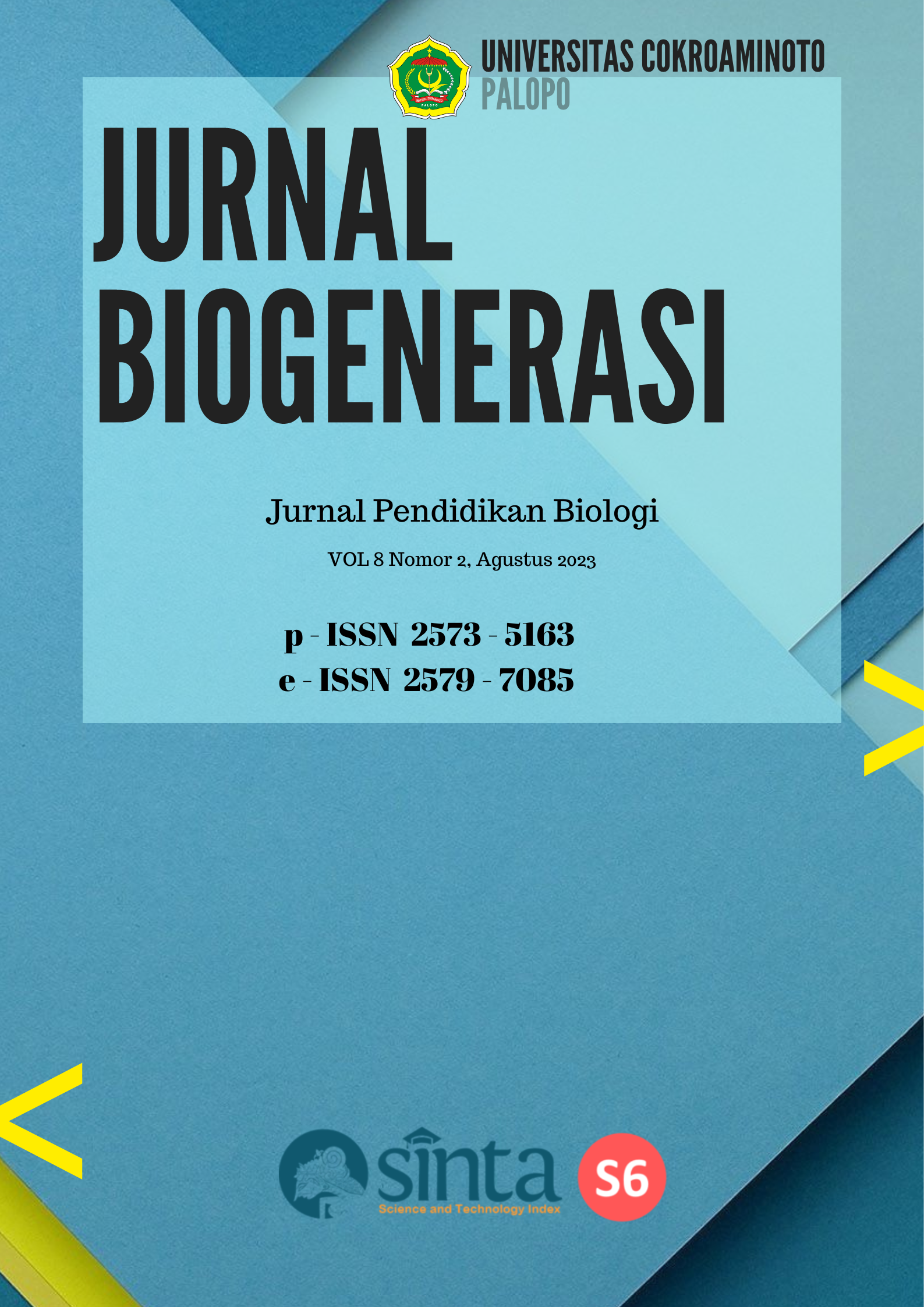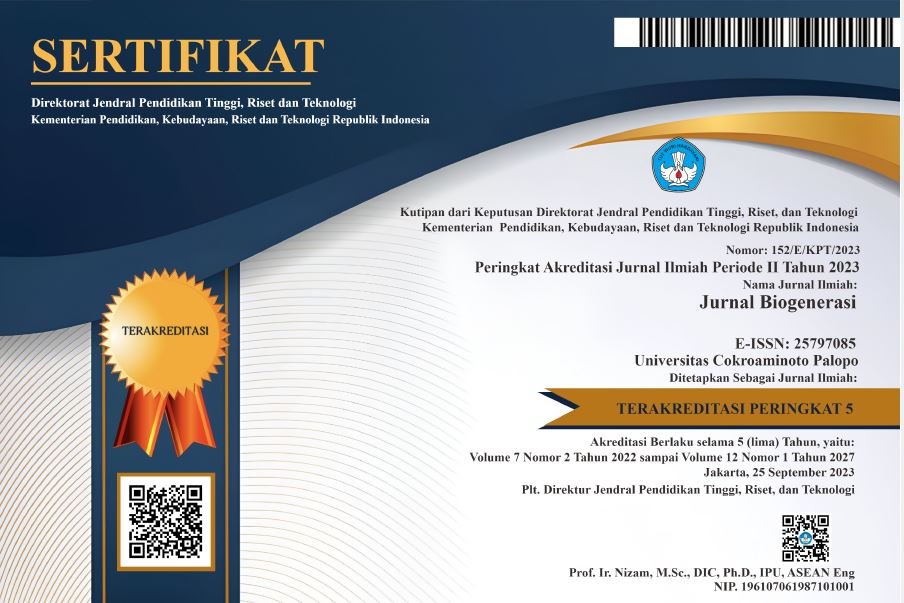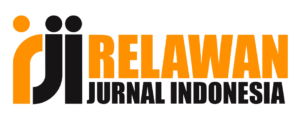UJI KEPRAKTISAN MEDIA PEMBELAJARAN E-ATLAS PREPARAT FOTOGRAFI ANATOMI TUMBUHAN MONOKOTIL FAMILIA POACEAE
DOI:
https://doi.org/10.30605/biogenerasi.v8i2.2898Keywords:
Kepraktisan, Media pembelajaran, e-Atlas, Familia PoaceaeAbstract
Penelitian ini adalah penelitian pengembangan Research and Development (R&D) bertujuan untuk mengetahui tingkat kepratikasan media pembelajaran e-Atlas preparat fotografi anatomi tumbuhan monokotil familia Poaceae. Model pengembangan penelitian ini yaitu ADDIE. Penelitian ini dilaksanakan di Laboratorium Biologi Jurusan Biologi FMIPA UNM dengan subjek penelitian yaitu 3 dosen pengampu mata kuliah anatomi tumbuhan dan 33 mahasiswa mahasiswa jurusan biologi jenjang strata satu (S1) yang telah memprogram mata kuliah anatomi tumbuhan. Pengembangan produk diawali dengan membuat preparat melalui metode section parafin dan preparat segar kemudian mengembangan desain e-Atlas dengan menggunakan aplikasi canva, dan dikembangkan menjadi media elektronik menggunakan flipbook. Instrumen penelitian yang digunakan berupa angket respon dosen pengampu mata kuliah anatomi tumbuhan dan angket respon mahasiswa. Berdasarkan hasil analisis data menunjukkan media pembelajaran e-Atlas preparat fotografi anatomi tumbuhan monokotil familia Poaceae memenuhi kriteria praktis berdasarkan hasil respon dosen pengampu mata kuliah anatomi tumbuhan yaitu 91,32% dan respon mahasiswa 91,97%, hal ini menunjukkan bahwa e-Atlas bersifat sangat praktis dengan memberikan respon positif. Berdasarkan hasil penelitian dapat disimpulkan bahwa media pembelajaran e-Atlas preparat fotografi anatomi tumbuhan monokotil familia Poaceae telah memenuhi kriteria praktis
Downloads
References
Mahasiswa Dalam Memilih Peminatan. Jurnal Kajian Teknologi Pendidikan. Vol. 4. No. 3, 251-259.
Coskun, S., Kayikcky, Y., & Gencay, E. 2019. Adapting Engineering Education to Industry 4.0 Journal of Vision. Technologies. 7(1), 10.
Latama, G., Achmad, M., & Maulani, K.R. 2017. Karakteristik Jaringan Secara Histologi dari Strain Rumput Laut (Kappaphycus alvarezii) yang Terinfeksi Penyakit Ice-Ice. Torani. Vol. 1. No.1, 45-57.
Riduwan. 2011. Skala Pengukuran Variabel-Variabel Penelitian. Bandung: Alfabeta.
Sajidan., dkk. 2016. Profil Keterampilan Argumentasi Ilmiah Mahasiswa Pendidikan Biologi FKIP UNS pada Mata Kuliah Anatomi Tumbuhan. BIOEDUKASI. Vol. 9. No. 1, 29-33.
Simarmata, J., dkk. 2020. Media Pembelajaran. Medan: Yayasan Kita Menulis.
Yulianti, E., Handayani. P., & Larasati, S. W. 2021. Pengembangan Atlas Keanekaragaman Tumbuhan Pionir Di Area Bekas Tambang Biji Besi Di Desa Pulau Layang Kecamatan Batang Masumai Kabupaten Merangin Sebagai Bahan Ajar Biologi Untuk Siswa Kelas X. Jurnal Pendidikan Biologi dan Biosains. Vol. 4. No. 2, 16-21.
Downloads
Published
How to Cite
Issue
Section
License
In submitting the manuscript to the journal, the authors certify that:
- They are authorized by their co-authors to enter into these arrangements.
- The work described has not been formally published before, except in the form of an abstract or as part of a published lecture, review, thesis, or overlay journal.
- That it is not under consideration for publication elsewhere,
- That its publication has been approved by all the author(s) and by the responsible authorities – tacitly or explicitly – of the institutes where the work has been carried out.
- They secure the right to reproduce any material that has already been published or copyrighted elsewhere.
- They agree to the following license and copyright agreement.
License and Copyright Agreement
Authors who publish with this journal agree to the following terms:
- Authors retain copyright and grant the journal right of first publication with the work simultaneously licensed under Creative Commons Attribution License (CC BY 4.0) that allows others to share the work with an acknowledgment of the work's authorship and initial publication in this journal.
- Authors are able to enter into separate, additional contractual arrangements for the non-exclusive distribution of the journal's published version of the work (e.g., post it to an institutional repository or publish it in a book), with an acknowledgment of its initial publication in this journal.
- Authors are permitted and encouraged to post their work online (e.g., in institutional repositories or on their website) prior to and during the submission process, as it can lead to productive exchanges, as well as earlier and greater citation of published work.



.png)

